art spectacle (596 résultats)
Type d'article
- Tous les types d'articles
- Livres (394)
- Magazines & Périodiques (3)
- Bandes dessinées
- Partitions de musique
- Art, Affiches et Gravures (181)
- Photographies (13)
- Cartes
-
Manuscrits &
Papiers anciens (5)
Etat
- Tous
- Neuf
- Ancien ou d'occasion
Reliure
Particularités
- Edition originale (64)
- Signé (18)
- Jaquette
- Avec images (521)
- Sans impression à la demande
Livraison gratuite
Pays
Evaluation du vendeur
-
Victoria Regia; or the Great Water Lily of America. With a brief account of its discovery and introduction into cultivation: with illustrations by William Sharp, from specimens grown at Salem, Massachusetts, U.S.A.
Edité par printed and published for the author by Dutton & Wentworth, Boston, 1854
Vendeur : Donald A. Heald Rare Books (ABAA), New York, NY, Etats-Unis
Broadsheet. (27 x 21 inches). Letterpress title, 1p. dedication to Caleb Cope, 12pp. text (numbered [5]-16); 1p. index, plate list, note and errata. 6 chromolithographic plates by Sharp & Sons of Dorchester, Mass, 5 after William Sharp, 1 after Allen. Original publisher's brown paper lettered upper wrapper bound in. Expertly bound to style in half green morocco and marbled paper covered boards, spine gilt with raised bands A monument to American colour printing, a work which launched the age of chromolithography as an art in the United States. This work is one of very few truly great American botanical works and is one of the most beautiful flower books ever produced. The Victoria Regia; or the Great Water Lily of America, provides an appropriate showcase for this gigantic water lily, first discovered along the Amazon River and then taken to Britain for cultivation. The so-called "vegetable wonder" was first described by Sir R. H. Schomburg in 1837. From the details he gave, the botanist John Lindley suggested that the lily was a new genera and put forward the name Victoria Regia in honour of Queen Victoria during the first year of her reign. "The giant water-lily is a spectacular flower; nineteenth century commentators describe with amazement the vast dimensions of its floating leaves, which could exceed two meters in diameter, and its great white flower, which opened in the evening and closed again at dawn in a truly lovely spectacle" (Oak Spring Flora). In 1853, Allen, a well-respected horticulturalist and author of a treatise on viticulture, cultivated a seed from the water-lily given to him by Caleb Cope, president of the Pennsylvania Horticultural Society, and the man in whose garden the water-lily first flowered in America on 21 August 1851. Working at his home in Salem, Massachusetts, Allen tended the seed from January to July, when, on the evening of July 21st, the flower finally bloomed. Motivated by his success, Allen hoped to make the glory of the water-lily available to a wider audience and engaged the services of William Sharp, a British-born artist and pioneer of chromolithography then working in Boston. Sharp had been practicing with the new technique of chromolithography as early as 1841, the first person to do so in the United States. His early efforts can be seen in Mattson's The American Vegetable Practice (1841), but, as McGrath states, those chromolithographs are merely "passable." Fortunately, Sharp improved his technique, and his next major project, the plates for Hovey's The Fruits of America (1852), demonstrated to all who viewed them the colourful and dramatic potential of chromolithography. Still, the process was in its infancy, and it would take a work of tremendous ambition to satisfactorily popularise the technique. Allen's proposed book on the water-lily provided such a vehicle. Though the first plate of the Victoria Regia is based on a sketch Allen composed himself, the remaining five plates, which show the gradual development of the flowers from bud to full bloom, are wholly attributable to Sharp. Superlative in concept, colour, and execution, they became the first benchmark of the art. "In the large water lily plates of Victoria Regia, Sharp printed colors with a delicacy of execution and technical brilliance never before achieved in the United States" (Reese, Stamped with a National Character). Great Flower Books (1990) p.69; Hofer Bequest 72; Hunt Printmaking in the Service of Botany 56; Nissen BBI 16; Reese Stamped with a National Character 19; Stafleu & Cowan TL2 85; Tomasi An Oak Spring Flora 106.
-
Victoria Regia; or the Great Water Lily of America. With a brief account of its discovery and introduction into cultivation: with illustrations by William Sharp, from specimens grown at Salem, Massachusetts, U.S.A.
Edité par printed and published for the author by Dutton & Wentworth, Boston, 1854
Vendeur : Donald A. Heald Rare Books (ABAA), New York, NY, Etats-Unis
Folio. (27 5/8 x 21 1/4 inches). Letterpress title (verso blank), 1p. dedication to Caleb Cope (verso blank), 12pp. text (numbered [5]-16); 1p. index, plate list, note and errata (verso blank). 6 chromolithographed plates by Sharp & Sons of Dorchester, Mass. (5 after William Sharp, 1 after Allen). Cloth-backed lettered paper boards. Housed in a green morocco backed box. A monument to American colour printing, a work which launched the age of chromolithography as an art in the United States, and one of the most beautiful flower books ever produced. The Victoria Regia; or the Great Water Lily of America, provides an appropriate showcase for this gigantic water lily, first discovered along the Amazon River and then taken to Britain for cultivation. The so-called "vegetable wonder" was first described by Sir R.H.Schomburg in 1837. From the details he gave, the botanist John Lindley suggested that the lily was a new genera and put forward the name Victoria Regia in honour of Queen Victoria during the first year of her reign. "The giant water-lily is a spectacular flower; nineteenth century commentators describe with amazement the vast dimensions of its floating leaves, which could exceed two meters in diameter, and its great white flower, which opened in the evening and closed again at dawn in a truly lovely spectacle" (Oak Spring Flora). In 1853, Allen, a well-respected horticulturalist and author of a treatise on viticulture, cultivated a seed from the water-lily given him by Caleb Cope, president of the Pennsylvania Horticultural Society, and the man in whose garden the water-lily first flowered in America on 21 August 1851. Working at his home in Salem, Massachusetts, Allen tended the seed from January to July, when, on the evening of July 21st, the flower finally bloomed. Motivated by his success, Allen hoped to make the glory of the water-lily available to a wider audience, and engaged the services of William Sharp, a British-born artist and pioneer of chromolithography then working in Boston. Sharp had been practicing with the new technique of chromolithography as early as 1841, the first person to do so in the United States. His early efforts can be seen in Mattson's The American Vegetable Practice (1841), but, as McGrath states, those chromolithographs are merely "passable." Fortunately, Sharp improved his technique, and his next major project, the plates for Hovey's The Fruits of America (1852), demonstrated to all who viewed them the colourful and dramatic potential of chromolithography. Still, the process was in its infancy, and it would take a work of tremendous ambition to satisfactorily popularise the technique. Allen's proposed book on the water-lily provided such a vehicle. Though the first plate of the Victoria Regia is based on a sketch Allen composed himself, the remaining five plates, which show the gradual development of the flowers from bud to full bloom, are wholly attributable to Sharp. Superlative in concept, colour, and execution, they became the first benchmark of the art. "In the large water lily plates of Victoria Regia, Sharp printed colors with a delicacy of execution and technical brilliance never before achieved in the United States" (Reese, Stamped with a National Character). Great Flower Books (1990) p.69; Hofer Bequest 72; Hunt Printmaking in the Service of Botany 56; Nissen BBI 16; Reese Stamped with a National Character 19; Stafleu & Cowan TL2 85; Tomasi An Oak Spring Flora 106.
-
Buffalo Bill [and the "Frenchman's Bottle Gag," a comic tableau from the wild west show]
Date d'édition : 1893
Vendeur : Donald A. Heald Rare Books (ABAA), New York, NY, Etats-Unis
Art / Affiche / Gravure Signé
Oil on canvas, laid down on wood, 22 x 30 inches. Signed and dated lower left: "Alfred Agoust / 1893," titled: "Buffalo Bill" on Kennedy Gallery labels. Superb condition, period-style gilt American exhibition frame. Provenance: Kennedy Galleries (labels); Collection of Edward Eberstadt & Sons. A very rare contemporary oil painting of an Act in Buffalo Bill's Wild West Show: Amost all of the images of the Wild West show are found in the great lithographic posters and photographs produced by the William F. Cody publicity machine. Period oil paintings of the Buffalo Bill act are very rare indeed. This wonderful image, showing a comic routine Buffalo Bill evidently adopted from European circus acts, is a unique contribution to the iconography of the Wild West Show. This entertaining painting almost certainly depicts a version of the comedy pantomime routine called "The Frenchman's Bottle Gag" as performed in England by Buffalo Bill Cody's Wild West Show. The painting shows a bewildered Buffalo Bill in the center of the canvas, apparently ready to come to blows with two cockney characters on either side of him, one of whom is swilling a drink from a flask. A prominent historian of performance tells us: "The gag, made famous in Paris by the Hanlon Brothers and their collaborator, the Agoust Family Jugglers, in the long playing three-stage acrobatics, magic, and pantomime spectacular, Le Voyage en Suisse, usually involves two clowns, a ridiculously dressed Frenchman, and his bottle. The clowns steal his bottle and surreptitiously sneak sips back-and-forth, as the bewildered Frenchman desperately attempts to figure out who's got his bottle. This image is of costers or pearlies, East End London cockneys, victimizing the Buffalo Bill character - the old Hanlon & Agoust drinking routine re-costumed for the Wild West show's British audience." Buffalo Bill Cody's Wild West Show made two extensive tours of England and Europe prior to the date of this painting, 1887-1888, arriving for Queen Victoria's Golden Jubilee, and 1889-1893, playing the great theaters and fairgrounds. The 1893 tour was at the height of the show's fame. The 1893 show program correctly stated, "Since the visit of Buffalo Bill's Wild West to England and its remarkable engagement in London, at West Brompton, in 1887, a history and tour have been made, such as no organization of its magnitude and requirements ever accomplished." Henri Agoust, the Hanlon's long-time collaborator (the parties later fell out and sued each other in a bitter legal dispute), had a son named Alfred, a member of the Agoust Family Jugglers. According to a census of traveling show people, he would have been in his early twenties in 1893. His biography is otherwise unknown. It seems likely, however, that the juggling Alfred Agoust was also the well trained, talented artist responsible for this magnificent show business painting, with its attention to costume, props, and comic gesture, demonstrating the specialized knowledge of the insider. John A. McKinven The Hanlon Brothers, their amazing acrobatics, pantomimes and stage spectacles (Glenwood, Illinois: David Meyer Magic Books, 1998), passim; Buffalo Bill's Wild West and Congress of Rough Riders of the World (Chicago: Blakely Printing Company, [1893]), passim.
-
par J. de la Tynna, de la Société d'Encouragement pour l'Industrie nationale. Année 1812. XVe année. Prix : 10 fr., et 13 fr., franc de port par la poste, pour tout l'Empire.
Date d'édition : 1812
Couverture rigide. Etat : Très bon. In-8 de 1039 pp. Plein maroquin rouge, encadrement de filets et roulette dorés autour des plats, armoiries de l'Empereur Napoléon Ier au centre des plats, dos lisse richement orné, coupes décorées, doublures et gardes de tabis bleu, tranches dorées. Reliure armoriée de l'époque.211 x 129 mm. --- L'Almanach du Commerce pour l'année 1812 relié en maroquin rouge de l'époque aux armes de l'Empereur Napoléon Ier.Il présente le « Tableau abrégé des principales productions et des principaux objets d'industrie de l'Empire français ; son étendue, sa population, etc.Paris : les manufacturiers, banquiers, négocians, marchands de tous états, agens de change, courtiers de commerce, libraires, journaux et feuilles périodiques, notaires, avocats, avoués, huissiers, etc., etc.; les Ministres, les grandes administrations, les tribunaux, la Banque de France, l'administration des postes, et les jours de départ des lettres pour la France et l'Étranger ; les messageries ; une liste particulière des principaux habitans de Paris ; enfin, les renseignemens les plus étendus dont la connaissance peut être utile au commerce, à l'industrie, aux arts et aux affaires.Départemens de l'Empire Français : l'étendue, les productions, la population, la désignation des préfectures, sous-préfectures, tribunaux, conservation des hypothèques ; les grandes routes, rivières et canaux navigables ; les manufacturiers, banquiers, négocians, libraires, agens de change, courtiers de commerce, principaux marchands, notaires, avoués et huissiers ; les chambres et bourses de commerce ; les chambres consultatives de manufactures, fabriques, arts et métiers ; les consuls et les vice-consuls des puissances étrangères ; les foires principales, etc.Les principales auberges ; les principaux cafés ; les curiosités des grandes villes les édifices publics remarquables par leur antiquité ou leur architecture ; les salles de spectacles, promenades , etc.Principaux états et /// 8vo [211 x 129 mm] of 1039 pp. Full red morocco, gilt framing of fillets and border around the covers, arms of the Emperor Napoléon in the center of the covers, flat spine richly decorated, doublures and endleaves in blue watered silk, gilt edges. Contemporary armorial binding. --- The Trade Almanac for the year 1812 contemporary bound with the arms of the Emperor Napoleon. It presents the "Abbreviated Table of the principal productions and principal objects of industry of the French Empire; its extent, population, etc. Paris: manufacturers, bankers, negotiators, merchants of all states, agents of exchange, commercial brokers, booksellers, newspapers and periodical sheets, notaries, lawyers, solicitors, ushers, etc., etc.,; the Ministers, the grand administrations, the courts, the Bank of France, the postal administrations, and the days of departure of letters for France and Overseas, couriers, a particular list of the principle habitants of Paris; finally, the most extensive information of which the knowledge may be useful to commerce, industry, arts and business. Departments of the French Empire: the extent, the productions, the populations, the designation of the prefectures, sub-prefectures, courts, conservation of mortgages; major roads, rivers and navigable canals; manufacturers, bankers, merchants, booksellers, agents of exchange, commercial brokers, principal merchants, notaries, solicitors and ushers; the chambers and stock of manufacturers, advisory chambers of manufacturers, factories, arts and cragts; consuls and vice-consuls of foreign power; the main fairs, etc. The main inns; the main cafes; the curiosities of large cities public buildings remarkable for their antiquity or architecture; theaters, walks, etc. Main states and main cities of the world: the extent, the principal productions, the population, the industry, the principal merchants and bankers, etc., etc.List of patents granted during the year 1811.Newspapers, books and periodicals.
-
Divers Essais Lithographiques
Edité par Paris: for the author, 1818., 1818
Vendeur : Arader Galleries - AraderNYC, New York, NY, Etats-Unis
Edition originale
Folio (13 1/8 x 9 5/8 inches). 14 leaves with lithographed portraits, views, or landscapes after Isabey, with his small blind stamp, and others, lithographed by Engelmann, Langlumé, Lasteyrie, Motte and others (one with 2 subjects, 7 printed with a sepia tint), one engraved plate at end (spotted throughout). Original engraved front wrapper mounted on the front cover of contemporary red boards (a bit worn at extremities). Provenance: from the library of fellow artist Alphonse Le Seynes, whose "Monuments Romains de Nimes" was also published in 1818, inscribed to him by Isabey on the front cover to him, further inscribed by the lithographer Le Gros beneath the portrait of Prince Eugene, beneath Isabey's portrait of Le Gros, and beneath the portrait of E. Jouey; with a later ownership inscription of the family on the front free endpaper; from the library of Jacques Levy, his sale, Sotheby's, 20th April 2012, lot 175 First edition, RARE. During his long life Isabey was celebrated as an accomplished miniaturist and engraver, rivaling the accomplishments of the great David, and exhibiting just as profound an influence upon his contemporaries. He was one of the earliest artists to experiment with lithography, as here. His career as an artist was illustrious: during the reign of Louis XVI he held the positions of painter and draughtsman for His Majesty's cabinet; painter and draughtsman for ceremonies and foreign relations with specific responsibility for the coronation; organiser of public festivals and fêtes at the Tuileries; draughtsman of the Seal and of Titles; during Napoleon's rule he was first painter of the empress Josephine's chamber; drawing master to Josephine's children Hortense and Eugene; decorator for the imperial theatres; and drawing teacher to the empress Marie-Louise, in which role he succeeded Prud'hon. From 1809 he had a studio in the porcelain factory of Sèvres. For Louis XVIII he became 'dessinateur et ordonnateur des fêtes et spectacles de la Cour' (1823), and for Charles X, 'dessinateur du Cabinet' (1828). In 1825 he was awarded the Légion d'honneur. During the government of Louis-Philippe, he was appointed 'Deputy Curator of the Royal Museums' in 1837. In 1853, Napoleon III made him Commander of the Légion d'honneur.
-
Daguerreotype and ambrotype portraits of Stacey and members of his family.
Edité par London, 1850s. 18??, 1850
Vendeur : Bernard Quaritch Ltd ABA ILAB, London, Royaume-Uni
A collection of 12 cased daguerreotypes (ninth to half plate), 7 framed/cased ambrotypes (ninth to quarter plate), and 1 cased hand-painted salt print photograph; some colour tinting; occasional tarnishing or spotting, some cases chipped, a few with hinges split; very good overall.A handsome set of photographs of the English Quaker and abolitionist George Stacey (1787-1857), his second wife Mary née Barclay (1797-1876) and members of their extended family, taken by some of the finest portraitists in England at that time.A partner in the London firm of chemists, Corbyn, Beaumont, Stacey & Messer, Stacey became a leading member of the Anti-Slavery Society following its foundation in 1823, and in the 1830s and 1840s served twelve times as clerk of the important yearly meeting of Quakers in London. He played a significant role in the 1840 Anti-Slavery Society Convention and appears in the front row next to Thomas Clarkson in Benjamin Haydon's famous painting of the occasion, and two years later was one of four British delegates sent to help resolve a schism within the Society of Friends in Salem, Iowa. Stacey married his cousin Deborah Lloyd (1796-1841), of the famous banking family, in 1818, and they had several children. Following her death, he married Mary Barclay in 1846.Stacey and his family clearly embraced the daguerreotype portrait and sought out portraitists of good repute. Timothy Edmund Le Beau was only the second person to be granted a license by Richard Beard to use the daguerreotype process in England. He had a studio in London from 1846 to 1852 and was awarded a medal for daguerreotypes exhibited at the Great Exhibition in 1851. Works by him are remarkably scarce institutionally. It is interesting to find here different portraits of George and Mary Stacey apparently taken at the same sitting with Le Beau. Antoine François Jean Claudet (1797-1867) took lessons from Daguerre himself before opening his first portrait studio on the roof of the Adelaide Gallery in London in 1841. He remained there until 1851, and two years later was appointed Photographer in Ordinary to Queen Victoria. William Edward Kilburn (1818-91) produced his finest daguerreotypes between 1852 and 1855 at his Regent Street studio, showing remarkable skill in his use of light and tinting. Richard Beard (1801-85) is justly remembered for his entrepreneurial activities promoting the early development in England of the new art of photography. John Jabez Edwin Mayall (1813-1901) was one of the most enduringly successful professional photographers of his day. His cartes de visite of Queen Victoria, Prince Albert and their children were the first set of royal photographs that were widely available.The photographs comprise:STACEY, George (Timothy LE BEAU, photographer). Half plate daguerreotype portrait of George seated in leather chair facing right, some colour tinting to face. Oval mount, original velvet-lined leather case with gilt stamp of 'Le Beau 8 London Terrace Hackney Road', hinge split.STACEY, George (Timothy LE BEAU, photographer). Half plate daguerreotype portrait of George seated in wooden chair facing right, hands clasped, faint colour tinting to face. Oval mount, original velvet-lined leather case, hinge split.STACEY, George and Mary (Timothy LE BEAU, photographer). Half plate daguerreotype portrait of George (seated, facing front) and Mary (standing, book in right hand, spectacles in left), faint colour tinting to faces. Arch top mount, original velvet-lined leather case with gilt stamp of 'Le Beau 8 London Terrace Hackney Road'.STACEY, George and Mary (Timothy LE BEAU, photographer). Half plate daguerreotype portrait of George (seated, facing right) and Mary (standing, right hand resting on table), some colour tinting. Arch top mount, original velvet-lined leather case with gilt stamp of 'Le Beau 8 London Terrace Hackney Road', paper label with ink note 'George & Mary Stacey of Lordship House, Tottenham taken about 1854-56, he died 1857, she died 1876'.STACEY, George and Mary (Timothy LE BEAU, photographer). Half plate daguerreotype portrait of George (seated, facing front) and Mary (standing, spectacles in left hand), faint colour tinting to faces, a little tarnishing at top of plate. Arch top mount, original velvet-lined leather case with gilt stamp of 'Le Beau 8 London Terrace Hackney Road'.STACEY, Mary (Antoine CLAUDET, photographer). Quarter plate daguerreotype portrait of Mary seated facing front, book in right hand, left arm resting on table, some colour tinting. Arch top mount, original velvet-lined leather case with gilt stamp 'Claudet's daguerreotype Royal Adelaide Gallery'.UNIDENTIFIED (Antoine CLAUDET, photographer). Quarter plate daguerreotype portrait of young woman facing front, slight tarnishing at edges. Arch top mount, original velvet-lined leather case with gilt stamp 'Claudet's daguerreotype Royal Adelaide Gallery'.UNIDENTIFIED. Sixth plate daguerreotype portrait of the same young woman seated facing right with elbow of right arm resting on table, colour tinting, some tarnishing and spotting at edges. Arch top mount, original velvet-lined leather case, hinge split.UNIDENTIFIED (Antoine CLAUDET, photographer). Quarter plate daguerreotype portrait of young man seated facing front, faint colour tinting. Arch top mount, original velvet-lined leather case with gilt stamp 'Claudet's daguerreotype Royal Adelaide Gallery'.UNIDENTIFIED (William Edward KILBURN, photographer). Sixth plate daguerreotype portrait of middle-aged woman seated facing right, right arm resting on table with book, colour tinting, some spotting to plate and mount. Arch top mount, original velvet-lined leather case with gilt stamp 'Mr Kilburn 254 Regent Street'.UNIDENTIFIED. Sixth plate daguerreotype portrait of elderly man seated facing left, some tarnishing to edges. Rectangular mount, original velvet-lined leather case.[?BARCLAY, William (?Richard Beard, photographer)] Ninth plate daguerreotype head and shoulders po.
-
Papier a cigarettes Job
Edité par Paris, 1896
Vendeur : Trillium Antique Prints & Rare Books, Franklin, TN, Etats-Unis
Art / Affiche / Gravure
Etat : Fine. Alphonse Mucha (illustrateur). This first edition, folio lithograph after a poster is from "Les Maitres de l'Affiche". The work was published by Imprimerie Chaix under the direction of Jules Cheret in Paris between 1896 and 1900. The prints were published as a monthly subscription, with 4 sent each month to subscribers. On 16 occasions "bonus" plates of original designs by noted artists were also included. Each lithograph features the blind embossed stamp of Maitres de l'Affiche designed by Cheret. Celebrated artists of the time contributed to the work including Steinlen, Mucha, Toulouse-Lautrec, Bonnard, Forain, Grasset, Meunier, Louis Rhead, Dudley Hardy, Beggarstaff, Edward Penfield et al. --- Jules Cheret was considered the father of poster art. "He dominated the series, with one in every four Maitres by him, the first in each monthly instalment, and 7 of the Special plates, a total of 67. With over 1000 poster designs to his credit, his large representation in the series is justified, although some critics have pointed out that, as the artistic director, he may have been biased towards selecting his own work." (Appelbaum p.iii) Cheret demonstrated a unique combination of artistic, technical, and entrepreneurial talent that spearheaded the poster industry. He opened his own print shop in 1866 in Paris and from 1881 on his shop operated as part of the Chaix firm which gave us "Les Maitres de l'Affiche". --- Among the most sought after plates in the work are the "Job" and "Moulin Rouge" by Toulouse Lautrec. Rennert noted of the "Job" by Mucha that "more than any other work of Mucha's, this beauty established him as the master of convoluted hair and the creator of unforgettable popular images; the poster was used for years in many variants all over the world, sometimes with marginal text in various languages. A classic by any standard." (Rennert, PAI-XLIX 389) "Jane Abdy called it "a secular icon," and indeed it is a magnificent production, considering that it advertises cigarette paper. "The background, in a dull imperial purple is a perfect foil for the golden curls of the smoking girl, whose locks are spread over the poster like the delicate filigree work of an Indian bracelet"(Abdy, p.136) --- This art subscription was created during the Belle Epoque period in France. "There was nothing exclusive about the 'joie de vivre' that swept Paris, at a delirious pace, out of the 19th century into the 20th. As Victor Hugo had observed, the city lived by, and for, the whole human race. Haussman's great boulevards had opened up a spacious stage where Paris made a spectacle of herself by day and night. Outdoors and indoors the walls of buildings flowered with posters that took their themes from the passing show of 'La Vie Parisenne.' Advertising never knew happier days. The most ephemeral of the arts has left us with a vision of the 'good old days' that vanished forever in the gunsmoke of 1914. Those gay nineties and naughty noughts that will always be remembered as 'La Belle Epoque.'(The beautiful era)" (Horizon p. 97) --- "By the 1890s the streets of every great metropolis were enlivened by large colourful posters (see The Great Poster Movement). The poster had not only caught the fancy of the broad public, but its best examples were already being regarded as works of art (specifically, as fine prints) to be exhibited, reviewed in journals, collected and reprinted in a manageable form. In the last five years of the century, the Imprimerie Chaix was to play great part in codifying, hallowing and perpetuating the ebullient period of 'La Belle Epoque.' It was in those years that the firm published "Les Maitres de l'Affiche" (Masters of the Poster) reduced lithographic versions, in authentic colours, of the best posters of Europe and America, by more than 90 great artists, posters that bring the period to life." (Appelbaum p.iii) --- The work is in very good to excellent condition. There may be a few minor imperfections to be expected with age. Please review the image carefully for condition and contact us with any questions. --- Paper Size ~ 11 1/4" by 15 1/2".
-
[Invitations].
Edité par [Paris], 1895-1966., 1895
Vendeur : Justin Croft Antiquarian Books Ltd ABA, Faversham, Royaume-Uni
A collection of 58 invitation cards to the notorious Parisian annual costume ball. The ball was inaugurated in 1892, and apart from the war years, ran until 1966, with attendance restricted to students and alumni of the École, both men and women, as well as a few 'artistic personalities' who had contributed to the preparation of the ball. They were held in several major venues scattered throughout Paris over the years, with most taking place at the Moulin Rouge, the Salle Wagram, and the Parc des Expositions at the Porte de Versailles. Although in its early years the ball was simply an elaborate party, from 1900 each ball had a specific theme, often derived from an ancient text or historic period or inspired by an 'exotic' foreign culture, around which various contests were arranged. With the addition of a theme the balls became more elaborate often turning into debaucherous affairs with guests soon discarding the period costumes that they were required to wear to gain entrance. The nudity, dancing and merrymaking often continued into the following day, the ball usually ending, with a shout of 'Vive les Quat'z' Arts!', around seven o'clock in the morning, followed by a procession through the Latin Quarter, the Louvre, and a march over the Pont du Carrousel to the Théâtre de l'Odéon, where the partygoers would disband. Not surprisingly The Bal des Quat'z'Arts quickly became one of the premier events of the summer season. The invitations were elaborately designed to match the spectacle of the events, and correspondingly were often thematically orientalist, exotic, or primitive, with overtly erotic and sexual imagery. They are a tour de force of the evolution of artistic style, showing the progress from Art Nouveau to modernist primitivism, up through psychedelic design - though in retrospect they exhibit a troubling degree of predatory sexism and cultural appropriation. The ball is famously depicted in a series of photographs by Brassaï of 1930 and numerous other photographic records exist of the ball, allowing a comparison of the themes of the printed invitations and the costumes worn on the night.There were different invitations for men, women and committee members, and most included a tear-off coupon, which often survive. This group contains examples from the following years, all complete with their coupons except where specified: 1895 (by Caran d'Ache); 1901 (without coupon) 1902 (without coupon); 1904 (m, without coupon); 1906 (?f); 1908 (f without coupon); 1909 (f); 1912 (f); 1913 (f, without coupon); 1914 (m, folded once); 1920 (f); 1922 (m); 1923 (f); 1923 (m); 1924 (f); 1926 (comité); 1927 (f, without coupon); 1927 (m, without coupon); 1928 (f); 1928 (m, without coupon); 1929 (m); 1929 (comité, without coupon); 1929 (f); 1930 (comité, without coupon); 1931 (m without coupon); 1931 (f without coupon); 1932 (m, without coupon); 1933 (m, without coupon); 1934 (m); 1939 (f?); 1946 (m); 1947 (m 2); 1948 (m) 1948 (f, without coupon); 1949 (m) 1949 (f); 1950 (m) 1950 (f); 1951 (m) 1951 (f) 1951 (additional); 1952 (m) 1952 (f ) 1952 (additional); 1953 (m) 1953 (f); 1954 (m?); 1955 (m) 1955 (f); 1956 (m) 1956 (f); 1958 (m) 1958 (?); 1959 (m); 1964 (m); 1966 (m?), plus one unidentified year. Artists include Caran-d'Ache, Jean Giraud, René-Marie Castaing, Noël Pol-Jean, Robert Abbadie, André Plisson and Renaud Archembault de Beaune and numerous others. 58 invitation cards (of various sizes), most printed in colour, many retaining the original perforated ticket coupon.
-
Lait Pur Sterilise
Edité par Paris, 1896
Vendeur : Trillium Antique Prints & Rare Books, Franklin, TN, Etats-Unis
Art / Affiche / Gravure
Etat : Fine. T.A. Steinlen (illustrateur). This first edition, folio lithograph after a poster is from "Les Maitres de l'Affiche". The work was published by Imprimerie Chaix under the direction of Jules Cheret in Paris between 1896 and 1900. The prints were published as a monthly subscription, with 4 sent each month to subscribers. On 16 occasions "bonus" plates of original designs by noted artists were also included. Each lithograph features the blind embossed stamp of Maitres de l'Affiche designed by Cheret. Celebrated artists of the time contributed to the work including Steinlen, Mucha, Toulouse-Lautrec, Bonnard, Forain, Grasset, Meunier, Louis Rhead, Dudley Hardy, Beggarstaff, Edward Penfield et al. --- Jules Cheret was considered the father of poster art. "He dominated the series, with one in every four Maitres by him, the first in each monthly instalment, and 7 of the Special plates, a total of 67. With over 1000 poster designs to his credit, his large representation in the series is justified, although some critics have pointed out that, as the artistic director, he may have been biased towards selecting his own work." (Appelbaum p.iii) Cheret demonstrated a unique combination of artistic, technical, and entrepreneurial talent that spearheaded the poster industry. He opened his own print shop in 1866 in Paris and from 1881 on his shop operated as part of the Chaix firm which gave us "Les Maitres de l'Affiche". --- Among the most sought after plates in the work are the "Job" and "Moulin Rouge" by Toulouse Lautrec. Rennert noted of the "Job" by Mucha that "more than any other work of Mucha's, this beauty established him as the master of convoluted hair and the creator of unforgettable popular images; the poster was used for years in many variants all over the world, sometimes with marginal text in various languages. A classic by any standard." (Rennert, PAI-XLIX 389) "Jane Abdy called it "a secular icon," and indeed it is a magnificent production, considering that it advertises cigarette paper. "The background, in a dull imperial purple is a perfect foil for the golden curls of the smoking girl, whose locks are spread over the poster like the delicate filigree work of an Indian bracelet"(Abdy, p.136) --- This art subscription was created during the Belle Epoque period in France. "There was nothing exclusive about the 'joie de vivre' that swept Paris, at a delirious pace, out of the 19th century into the 20th. As Victor Hugo had observed, the city lived by, and for, the whole human race. Haussman's great boulevards had opened up a spacious stage where Paris made a spectacle of herself by day and night. Outdoors and indoors the walls of buildings flowered with posters that took their themes from the passing show of 'La Vie Parisenne.' Advertising never knew happier days. The most ephemeral of the arts has left us with a vision of the 'good old days' that vanished forever in the gunsmoke of 1914. Those gay nineties and naughty noughts that will always be remembered as 'La Belle Epoque.'(The beautiful era)" (Horizon p. 97) --- "By the 1890s the streets of every great metropolis were enlivened by large colourful posters (see The Great Poster Movement). The poster had not only caught the fancy of the broad public, but its best examples were already being regarded as works of art (specifically, as fine prints) to be exhibited, reviewed in journals, collected and reprinted in a manageable form. In the last five years of the century, the Imprimerie Chaix was to play great part in codifying, hallowing and perpetuating the ebullient period of 'La Belle Epoque.' It was in those years that the firm published "Les Maitres de l'Affiche" (Masters of the Poster) reduced lithographic versions, in authentic colours, of the best posters of Europe and America, by more than 90 great artists, posters that bring the period to life." (Appelbaum p.iii) --- The work is in very good to excellent condition. There may be a few minor imperfections to be expected with age. Please review the image carefully for condition and contact us with any questions. --- Paper Size ~ 11 1/4" by 15 1/2".
-
L'architecture des nations étrangères. Etude sur les principales constructions du parc à l'Exposition Universelle de Paris (1867).
Edité par Paris, A. Morel, 1870., 1870
Vendeur : Bernard Quaritch Ltd ABA ILAB, London, Royaume-Uni
Edition originale Signé
First Edition. Folio, pp. [iv], 27, [3], with 56 plates (numbered to 73), of which eleven are chromolithographed and four are double-page; some light spotting and dust-soiling (generally restricted to plate margins), but a very good copy in recent red morocco-backed marbled boards, spine richly gilt. `First edition. This is a presentation copy, inscribed on the half-title to the author's friend Charles Garnier, architect of the Paris opera house that bears his name: 'A son ami Ch. Garnier. Souvenir affectueux A. Normand'. The two men had known each other since they were both 'pensionnaires' at the Academy of France in Rome in the late 1840s and early 1850s.Normand's work is a detailed record of the principal edifices of the vast architectural theme park constructed for the Exposition Universelle of 1867, 'a spectacle without equal which, in all probability, future generations will never have the opportunity to witness' (translated from Normand's preface). The 1867 exhibition was the first such event to feature actual buildings (temples, palaces, houses, schools) rather than mere models or architectural drawings. Normand devotes most attention to the Egyptian section (designed by Jacques Drevet) and to those of Tunisia and Morocco (both designed by Alfred Chapon).'In 1867 Tunisia's and Morocco's displays in Paris seemed to some observers a deliberate escape from the economic and political upheavals the two countries were experiencing. Agricultural, industrial, and commercial spheres were omitted: instead, there were palaces with exuberant interiors and furniture, royal costumes, and armour simply "everything that glitters, shines, and adorns". Others noted the artistic value of the Tunisian and Moroccan pavilions. Alfred Normand claimed that they "were important not only for their size, but also for their tastefulness, their picturesque effect, and especially the brand new and charming sensation that they arouse in us . . . . [Here was] a particular type of dwelling, where art was not excluded . . . from everyday activities" ' (Zeynep Çelik, Displaying the Orient: architecture of Islam at nineteenth-century World's Fairs, pp. 122 3).Alfred Normand (1822 1909) was an architect and a photographer. His most notable commission was the celebrated Pompeian-style villa (now demolished) built for the prince Jérôme Bonaparte on the Avenue Montaigne in Paris. Language: French.
-
Jane Avril
Edité par Paris, 1896
Vendeur : Trillium Antique Prints & Rare Books, Franklin, TN, Etats-Unis
Art / Affiche / Gravure
Etat : Fine. Toulouse-Lautrec (illustrateur). This first edition, folio lithograph after a poster is from "Les Maitres de l'Affiche". The work was published by Imprimerie Chaix under the direction of Jules Cheret in Paris between 1896 and 1900. The prints were published as a monthly subscription, with 4 sent each month to subscribers. On 16 occasions "bonus" plates of original designs by noted artists were also included. Each lithograph features the blind embossed stamp of Maitres de l'Affiche designed by Cheret. Celebrated artists of the time contributed to the work including Steinlen, Mucha, Toulouse-Lautrec, Bonnard, Forain, Grasset, Meunier, Louis Rhead, Dudley Hardy, Beggarstaff, Edward Penfield et al. --- Jules Cheret was considered the father of poster art. "He dominated the series, with one in every four Maitres by him, the first in each monthly instalment, and 7 of the Special plates, a total of 67. With over 1000 poster designs to his credit, his large representation in the series is justified, although some critics have pointed out that, as the artistic director, he may have been biased towards selecting his own work." (Appelbaum p.iii) Cheret demonstrated a unique combination of artistic, technical, and entrepreneurial talent that spearheaded the poster industry. He opened his own print shop in 1866 in Paris and from 1881 on his shop operated as part of the Chaix firm which gave us "Les Maitres de l'Affiche". --- Among the most sought after plates in the work are the "Job" and "Moulin Rouge" by Toulouse Lautrec. Rennert noted of the "Job" by Mucha that "more than any other work of Mucha's, this beauty established him as the master of convoluted hair and the creator of unforgettable popular images; the poster was used for years in many variants all over the world, sometimes with marginal text in various languages. A classic by any standard." (Rennert, PAI-XLIX 389) "Jane Abdy called it "a secular icon," and indeed it is a magnificent production, considering that it advertises cigarette paper. "The background, in a dull imperial purple is a perfect foil for the golden curls of the smoking girl, whose locks are spread over the poster like the delicate filigree work of an Indian bracelet"(Abdy, p.136) --- This art subscription was created during the Belle Epoque period in France. "There was nothing exclusive about the 'joie de vivre' that swept Paris, at a delirious pace, out of the 19th century into the 20th. As Victor Hugo had observed, the city lived by, and for, the whole human race. Haussman's great boulevards had opened up a spacious stage where Paris made a spectacle of herself by day and night. Outdoors and indoors the walls of buildings flowered with posters that took their themes from the passing show of 'La Vie Parisenne.' Advertising never knew happier days. The most ephemeral of the arts has left us with a vision of the 'good old days' that vanished forever in the gunsmoke of 1914. Those gay nineties and naughty noughts that will always be remembered as 'La Belle Epoque.'(The beautiful era)" (Horizon p. 97) --- "By the 1890s the streets of every great metropolis were enlivened by large colourful posters (see The Great Poster Movement). The poster had not only caught the fancy of the broad public, but its best examples were already being regarded as works of art (specifically, as fine prints) to be exhibited, reviewed in journals, collected and reprinted in a manageable form. In the last five years of the century, the Imprimerie Chaix was to play great part in codifying, hallowing and perpetuating the ebullient period of 'La Belle Epoque.' It was in those years that the firm published "Les Maitres de l'Affiche" (Masters of the Poster) reduced lithographic versions, in authentic colours, of the best posters of Europe and America, by more than 90 great artists, posters that bring the period to life." (Appelbaum p.iii) --- The work is in very good to excellent condition. There may be a few minor imperfections to be expected with age. Please review the image carefully for condition and contact us with any questions. --- Paper Size ~ 11 1/4" by 15 1/2".
-
Moulin Rouge - La Goulue
Edité par Paris, 1896
Vendeur : Trillium Antique Prints & Rare Books, Franklin, TN, Etats-Unis
Art / Affiche / Gravure
Etat : Fine. Toulouse-Lautrec (illustrateur). This first edition, folio lithograph after a poster is from "Les Maitres de l'Affiche". The work was published by Imprimerie Chaix under the direction of Jules Cheret in Paris between 1896 and 1900. The prints were published as a monthly subscription, with 4 sent each month to subscribers. On 16 occasions "bonus" plates of original designs by noted artists were also included. Each lithograph features the blind embossed stamp of Maitres de l'Affiche designed by Cheret. Celebrated artists of the time contributed to the work including Steinlen, Mucha, Toulouse-Lautrec, Bonnard, Forain, Grasset, Meunier, Louis Rhead, Dudley Hardy, Beggarstaff, Edward Penfield et al. --- Jules Cheret was considered the father of poster art. "He dominated the series, with one in every four Maitres by him, the first in each monthly instalment, and 7 of the Special plates, a total of 67. With over 1000 poster designs to his credit, his large representation in the series is justified, although some critics have pointed out that, as the artistic director, he may have been biased towards selecting his own work." (Appelbaum p.iii) Cheret demonstrated a unique combination of artistic, technical, and entrepreneurial talent that spearheaded the poster industry. He opened his own print shop in 1866 in Paris and from 1881 on his shop operated as part of the Chaix firm which gave us "Les Maitres de l'Affiche". --- Among the most sought after plates in the work are the "Job" and "Moulin Rouge" by Toulouse Lautrec. Rennert noted of the "Job" by Mucha that "more than any other work of Mucha's, this beauty established him as the master of convoluted hair and the creator of unforgettable popular images; the poster was used for years in many variants all over the world, sometimes with marginal text in various languages. A classic by any standard." (Rennert, PAI-XLIX 389) "Jane Abdy called it "a secular icon," and indeed it is a magnificent production, considering that it advertises cigarette paper. "The background, in a dull imperial purple is a perfect foil for the golden curls of the smoking girl, whose locks are spread over the poster like the delicate filigree work of an Indian bracelet"(Abdy, p.136) --- This art subscription was created during the Belle Epoque period in France. "There was nothing exclusive about the 'joie de vivre' that swept Paris, at a delirious pace, out of the 19th century into the 20th. As Victor Hugo had observed, the city lived by, and for, the whole human race. Haussman's great boulevards had opened up a spacious stage where Paris made a spectacle of herself by day and night. Outdoors and indoors the walls of buildings flowered with posters that took their themes from the passing show of 'La Vie Parisenne.' Advertising never knew happier days. The most ephemeral of the arts has left us with a vision of the 'good old days' that vanished forever in the gunsmoke of 1914. Those gay nineties and naughty noughts that will always be remembered as 'La Belle Epoque.'(The beautiful era)" (Horizon p. 97) --- "By the 1890s the streets of every great metropolis were enlivened by large colourful posters (see The Great Poster Movement). The poster had not only caught the fancy of the broad public, but its best examples were already being regarded as works of art (specifically, as fine prints) to be exhibited, reviewed in journals, collected and reprinted in a manageable form. In the last five years of the century, the Imprimerie Chaix was to play great part in codifying, hallowing and perpetuating the ebullient period of 'La Belle Epoque.' It was in those years that the firm published "Les Maitres de l'Affiche" (Masters of the Poster) reduced lithographic versions, in authentic colours, of the best posters of Europe and America, by more than 90 great artists, posters that bring the period to life." (Appelbaum p.iii) --- The work is in very good to excellent condition. There may be a few minor imperfections to be expected with age. Please review the image carefully for condition and contact us with any questions. --- Paper Size ~ 11 1/4" by 15 1/2".
-
Galerie Théâtrale. Collection de 144 portraits en pied des principaux acteurs et actrices qui ont illustré la scène française depuis 1552 jusqu'à nos jours.
Edité par Barraud,, Paris,, 1873
Vendeur : Librairie l'Art et la Manière, BOYNES, France
Livre Signé
Ouvrage bien complet de ses 144 planches hors-texte, aquarellées, de Favart, Dutertre, Coeuré, etc. Chaque portrait est accompagné d?une notice biographique de 2 à 3 feuillets. L?illustration se compose également de 84 gravures dans le texte, dont 18 dessinées et gravées exprès pour l?ouvrage ; les 66 autres sont de ravissantes vignettes d?Eisen, Boucher, Halle, Baron, Français, Janet-Lange, etc. Colas, 1165. Ex-libris de Dranem signé Cami. Armand Ménard dit Dranem (1869-1935) est un chanteur et fantaisiste français. Son répertoire de chansons à l'humour incongru et souvent scabreux a fait de lui une des vedettes les plus populaires du café-concert, où il lance le genre du comique niais et malicieux. Il crée au music-hall de nombreuses revues et opérettes, et interprète plusieurs rôles au cinéma. Il est le fondateur de la maison de retraite des artistes du spectacle de Ris-Orangis. Humoriste français, doué pour la caricature, mais plus particulièrement encore pour le théâtre loufoque, Pierre Henri Cami (1884-1958) jouit d'un immense succès populaire dès 1914. Il crée des personnages burlesques fort appréciés jusqu'à la Seconde Guerre mondiale. Il est l'auteur de « la semaine Camique » dans L'Illustration et le fondateur de l'Académie de l'Humour. En 1953, il est le lauréat du Grand Prix d'Humour International. Charlie Chaplin le qualifie de « plus grand humoriste in the world » et Jacques Prévert propose le terme de « camisard » pour désigner ses admirateurs. Ce portrait de Dranem, caricaturé par Cami, a été utilisé en couverture de plusieurs titres composés par Gabaroche dans les années 1915-1920 (édités par Gaston Gabaroche ou par Roger Myra). Chers clients Abebooks, le poids et le volume important de cet ouvrage entraîneront des frais postaux additionnels, merci de le prendre en considération avant votre achat. Dear Abebooks customers, the weight and volume of this book will entail additionnal shipping fees, thank you for taking it into consideration before ordering. Clients Livre Rare Book : Les frais postaux indiqués sont ceux pour la France métropolitaine et la Corse, pour les autres destinations, merci de contacter la librairie pour connaître le montant des frais d'expédition, merci de votre compréhension. Livre Rare Book Customers : The shipping fees indicated are only for France, if you want international shipping please contact us before placing your order, thank you for your understanding. Reliures signées Pouillet, en demi-maroquin rouge à coins, dos à 5 nerfs ornés de riches caissons dorés, doubles filets dorés sur les plats, têtes dorées. 2 ff., frontispice, VII, III, 141 ff. non chiffrés, 73 pl. h.-t.; 2 ff., III, 136 ff. non chiffrés, 71 pl. h.-t. Rares rousseurs sur certaines notices, sans conséquence, quelques petites traces de frottements, notamment sur les mors, coins très légèrement émoussés, une pâle petite mouillure marginale sur les 4 derniers feuillets et les pages de garde in fine du second volume, sinon très bel exemplaire à l?intéressante provenance.
-
Riche lettre de Sand à son ami Delacroix sur ses envies d écrire « quelques pages sur la peinture », les Femmes d Alger, son mépris pour l école ingresque et autres actualités artistiques
Date d'édition : 1841
Vendeur : Le Manuscrit Français, Versailles, France
Membre d'association : ILAB
Manuscrit / Papier ancien Edition originale Signé
Pas de couverture. Etat : Bon. Edition originale. [DELACROIX] SAND, George (1804-1876) Lettre autographe signée « G.S. » à Eugène Delacroix
[Paris] Cachet postal [23 décembre 1841], 1 p. 1/2 in-8°, à son en-tête, gaufré « G.S »
Adresse autographe sur la quatrième page (cachet de cire) : « Monsieur Delacroix rue des Marais S[ain]t Germain, 17 » Riche lettre de Sand à son ami Delacroix sur ses envies d écrire « quelques pages sur la peinture », les Femmes d Alger, son mépris pour l école ingresque et autres actualités artistiques « Vous avez bien fait, cher ami, de ne pas venir à l Opéra. C était ennuyeux à crever malgré la beauté et la pompe du spectacle. J espère que vos truffes vous auront donné de meilleures inspirations musicales que la reine de Chypre n en a donné à Mr Halevy.(1)
Venez ce soir comme vous me l avez promis. J ai à vous parler sur des matières artistiques !!! [le mot est entouré par Sand d un triple trait de plume]. Sans plaisanterie, j écris quelques pages sur la peinture, et j ai besoin de vous pour savoir si je ne déraisonne pas. (2) 
Bonjour et bonne nuit. Il est 6h du matin. Vous devriez venir dîner avec nous. Nous avons embelli notre existence d un pot-au-feu quotidien et avec le dîner de l anglais(3) et du bon café c est supportable.
G.S.
La Lélia(4) avec son moine et son mort, me frappe et me plaît de plus en plus, c est ce qui m a mise en veine d écrire sur la couleur et ce qu il faut entendre par la forme. Avec ça j ai vu vos femmes d Alger(5) ce matin. Si vous m encouragez, je suis capable de faire le prochain salon dans notre revue [La Revue indépendante], et vous savez que je ne caponnerai pas [ne se montrera pas lâche] avec tout cette école silhouettiste(6) qui se dit en possession du dessin ». [1] La Reine de Chypre, opéra en cinq actes de Halévy sur un livret de Saint-Georges, a eu lieu la veille, le 22 décembre 1841. À l inverse de George Sand, Richard Wagner, qui fut également présent à la première, jugea la musique « noble, émue et même nouvelle et exaltante », même s il critique les défaillances d Halévy qui aboutirent à une orchestration simple.
[2] Dans Horace, que George Sand est alors en train d écrire, elle met en scène un rapin, élève de Delacroix, mais on n y trouve pas les « quelques pages sur la peinture ». S agit-il d un article destiné à la Revue indépendante qu elle vient de créer mais auquel elle aurait renoncé ? Le mot écrit en post-scriptum confirme bien qu il s agit d une réflexion esthétique qui porte sur la « couleur » et la « forme ».
[3] Allusion possible à un restaurateur ou à un traiteur anglais fréquenté par George Sand.
[4] Lélia avec son moine et son mort est la troisième uvre offerte par Delacroix à George Sand pour les étrennes de 1842. Il s agit d un pastel représentant Lélia agenouillée près du cadavre de Sténio, pendant que le moine Magnus, « dans l ombre, adossé avec raideur au mur de la grotte, dardait sur elle ses yeux étincelants ». Le sujet a été traité plusieurs fois par Delacroix.
[5] Il s agit des Femmes d Alger dans leur appartement, tableau présenté au Salon de 1834, où il fait sensation. Synthèse d orientalisme et de romantisme, ce tableau exprime une profonde « mélancolie » pour le poète et critique d art Baudelaire.
[6] George Sand désigne l école d Ingres en parlant « d école silhouettiste ». On connaît l adversité entre les deux peintres qui anima la scène artistique du XIXe siècle. L écrivaine avait résolument pris le parti de Delacroix, celui de la « forme » et de la « couleur ». Bibliographie :
George Sand Correspondance, t. V, Lubin, Garnier, p. 529-531, lettre n°2369
Correspondance, éd. Françoise Alexandre, Les éditions de l Amateur, p. 117-118, n°50 Provenance :
Achille Piron (légataire universel de Delacroix)
Bibliothèque Marc Loliée. Signé par l'auteur.
-
Sheet Music- Come Home Father, Old Josey, The Quadrille of All Nations, Gen. Carrington's Home March, Merry Sleigh Bells, The Quadrille of All Nations, Mother's Bible, Jockey Hat and Feathers, A Home in the West, Dear Bygone Hours,
Edité par Privately Printed/Limited Edition, USA, 1870
Vendeur : Ziern-Hanon Galleries, Frontenac, MO, Etats-Unis
Half Morocco Leather. Etat : Good. Privately bound copy of Mostly American 19th century sheet music. All are arranged for piano and many have a vocal line. All are published between c1840 - c1870 in American cities. Bound in 3/4 morocco with a morocco label on the front cover with the name "M. & H. Dieker". The songs are: General Carrington's Home March, by Henryi Sherbrooke- 1863; Alexandria Waltz, by F. Rasche, 1845; Charles River Quick Step, by S. Knaebel- 1845; Cinderella Waltz, by Rossini- 1845; Six Popular Dances, by Andrien Talexy; National Scottish, by CHs. D' Albert- 1850; The Merry Sleigh Bells Polka, by Charles S. Brainard-1861; The Bridal March from the Grand Spectacle of Mazeppa, by J. Sprake- 1845; The Exhibition Quadrille, by Rule Britannia- 1850; Songs of the Hutchinson Family: My Mother's Bible, by Geo. Harris and Henry Russell; Jockey Hat and Feather, by Fred Wilson and W. H. Brockway- 1851; We Met by Chance, by F. Kucken; A Home in the West, J. M. Hubbard and Hubbard M. Smith- 1864; Dear by Gone Hours, by R. Albert and C. D. Kirk- 1852; Farewell Sweet Mother, by Stephen C. Foster- 1861; Come Home, Father, by Henry Clay Work- 1864; I Would I Were a Child Again or The Old Oak Tree, by H. T. Merrill- 1853; Pretty Blue Star! Ballad, by John Blockley- 1852; Dreaming Maiden Song, by Gen. A. Sanders Piatt and Mrs. O'Connell- 1866; Old Josy, by Wurzel- 1854; Forget Not the Loved Ones at Home, by I. B. Woodbury- 1850; Salut a' Marion: The Chamois Hunter, by H. Aug. Pond. - 1858. There are several beautiful pieces of cover art of which most are black & white. However, there is one handcolored picture before "The Exhibition Quadrille" that shows the Quadrille of All Nations with its dimensions. Endpages are wrinkled. There is a little soiling and general wear to the boards and spine. Raised bands with some gilt decoration on the spine. There is some light foxing that is intermittent. civil WAR: "General Carrington's March" is from the middle of the American Civil War. "Come Home, Father" is an anthem of the Temperance movement in which a Child sings in the middle of a bar, begging her father to come home. Also includes 3 handcopied sheets of music for 2 parts of the chorus of "Sherman's March to the Sea". Size: Folio - over 12" - 15" tall. Hardcover.
-
[SURREAL JAPANESE STAGE PROP DESIGNS]. Tsukurimono shukÅ no tane ("Ideas for fabricated things")
Edité par Aoki TsunesaburÅ , Å saka, 1890
Vendeur : Michael Laird Rare Books LLC, Lockhart, TX, Etats-Unis
COMPLETE SET of four parts in two volumes, 8vo (221 x 154 mm). Vol. I: 3, 22 ff. [recte: 18, deliberately mis-paginated by the publisher]; Vol. II: 11, 9 ff. [plus fol. "23" from Vol. I]. Three parts (first series (in one part) and second series (in two parts)) in two four-hole-bound (yotsumetoji) volumes, complete, on double leaves, traditional East Asian binding style (fukurotoji). Original wrappers lightly soiled and scraped. Small chips to original mounted daisen title panels. First volume lacks blank upper pastedown. Very light internal thumbing and occasional marks. The title on the daisen reads Tsukurimono shukÅ no tane: shiki. THIS STRANGE AND WONDERFUL JAPANESE FOLK ART SEEMS TO HAVE NO EQUIVALENT IN WESTERN THEATER. Now virtually forgotten, "Tsukurimono" (literally "fabricated things") are amusing Japanese stage props made with everyday objects, ingeniously transformed into theatrical props of anything that can be imagined: monsters, wild animals, nobility, giant insects, horses, elephants, spiders, raptors, tea carts, infirm beggars, mountains, platforms, wells, trees, and much more. Almost any material was repurposed and utilized in the manufacture of Tsukurimono: metal, bamboo, vegetables, ceramics, flowers, dried foods, cleaning supplies, garden and household tools, fabric, kitchen utensils, coins, and much more. From the Edo period onwards, Tsukurimono formed an important component of the stage at festivals, spectacles, exhibitions, and social gatherings, in rural and urban settings alike. First published in 1837, this is a later (Meiji) printing of Matsukawa Hanzan's justly famous album of Tsukurimono, which is absolutely delightful and is a joy to behold. Each illustration is captioned with a title and a list of the items used. Some illustrations feature the name of the object's creator and a note about the item itself; others are accompanied by a short poem. One such prop is made from agricultural tools, another from items typically found in a liquor store, another from tea ceremony utensils, and much more. The work includes a practical section entitled "Tsukurimono tomeyÅ no den" which describes the process of making the objects, with a particular emphasis on adhering materials together. MUST BE SEEN TO BE FULLY APPRECIATED. See Tsuji Nobuo, Ornament (Kazari): An Approach to Japanese Culture (1994) and his History of Art in Japan (2018).
-
Les Souvenirs et les regrets du vieil amateur dramatique, ou Lettres d' un Oncle à son Neveu sur l'ancien Théâtre français.
Date d'édition : 1829
Couverture rigide. Etat : Très bon. Paris, Charles Froment, 1829.Petit in-8 de viii pp., 214pp., (1) f., 36 planches hors texte en couleurs protégées par des serpentes.Veau glacé framboise, sur les plats encadrement d'un fi let doré et de motifs à froid, grand médaillon central en losange à froid, dos à nerfs orné de motifs dorés et à froid, filet doré sur les coupes, petite dentelle intérieure, tranches dorées. (Thouvenin).169 x 103 mm. --- Edition originale de ce très bel ouvrage illustré de 36 planches hors texte gravées sur cuivre et peintes au pinceau à la main, certaines avec des rehauts en or.Carteret, 37 ; Colas, n° 159.Remarquable illustration sur les costumes de spectacle. Ces gravures de Foech de Basle et de Whirsker, exécutées d'après nature, représentent les acteurs en pied dans les rôles où ils ont excellé.En tête de l'ouvrage sont placés les portraits en pied du « plus grand poète et du plus grand acteur de l'époque », Voltaire et Lekain, représentés répétant une scène de Mahomet. Toutes les illustrations sont de Foech. « Gravés d'après des gouaches de la plus petite proportion, ils sont néanmoins de la plus singulière ressemblance. Wirsker, auteur de ces gouaches, y a reproduit avec l'exactitude la plus spirituelle la physionomie, le maintien, le caractère de ses originaux, dans les rôles où ils ont excellé, et dans les situations où ils excitaient le plus d'enthousiasme. Mes gravures en sont une fidèle copie. » (Foech). Très bel exemplaire conservé dans une plaisante reliure romantique estampée de Thouvenin. /// Paris, Charles Froment, 1829.Small 8vo [169 x 103 mm] of viii pp., 214 pp., (1) l., 36 colored plates out of pagination and protected with silky-papers.Raspberry glazed calf, gilt fillet and blind-stamped decorations on the covers, diamond-shape large central medallion, spine ribbed and decorated, inner gilt border, gilt edges. (Thouvenin). --- First edition of this superb work illustrated with 36 copper-engravings out of pagination hand-painted with a brush at the time, some enhanced with gold. Carteret, 37 ; Colas, n° 159.Remarkable illustration on theatre costumes.These engravings by Foech de Basle and Whirsker, executed from life, represent the full-length actors in the roles in which they excelled.At the beginning of the work are placed the full-length portraits of "the greatest poet and the greatest actor of the time", Voltaire and Lekain, represented rehearsing a scene of Mahomet.All the illustrations are by Foech."Engraved from gouaches of the smallest proportion, they are nevertheless of the most singular resemblance. Wirsker, author of these gouaches, reproduced there with the most spiritual exactitude the physiognomy, the demeanor, the character of the originals, in the roles in which they excelled, and in the situations in which they excited the most enthusiasm. My engravings are a faithful copy. "(Foech).Very beautiful copy preserved in its elegant romantic blind-stamped binding by Thouvenin.
-
Motocylcles Comiot
Edité par Paris, 1896
Vendeur : Trillium Antique Prints & Rare Books, Franklin, TN, Etats-Unis
Art / Affiche / Gravure
Etat : Fine. Steinlen (illustrateur). This first edition, folio lithograph after a poster is from "Les Maitres de l'Affiche". The work was published by Imprimerie Chaix under the direction of Jules Cheret in Paris between 1896 and 1900. The prints were published as a monthly subscription, with 4 sent each month to subscribers. On 16 occasions "bonus" plates of original designs by noted artists were also included. Each lithograph features the blind embossed stamp of Maitres de l'Affiche designed by Cheret. Celebrated artists of the time contributed to the work including Steinlen, Mucha, Toulouse-Lautrec, Bonnard, Forain, Grasset, Meunier, Louis Rhead, Dudley Hardy, Beggarstaff, Edward Penfield et al. --- Jules Cheret was considered the father of poster art. "He dominated the series, with one in every four Maitres by him, the first in each monthly instalment, and 7 of the Special plates, a total of 67. With over 1000 poster designs to his credit, his large representation in the series is justified, although some critics have pointed out that, as the artistic director, he may have been biased towards selecting his own work." (Appelbaum p.iii) Cheret demonstrated a unique combination of artistic, technical, and entrepreneurial talent that spearheaded the poster industry. He opened his own print shop in 1866 in Paris and from 1881 on his shop operated as part of the Chaix firm which gave us "Les Maitres de l'Affiche". --- Among the most sought after plates in the work are the "Job" and "Moulin Rouge" by Toulouse Lautrec. Rennert noted of the "Job" by Mucha that "more than any other work of Mucha's, this beauty established him as the master of convoluted hair and the creator of unforgettable popular images; the poster was used for years in many variants all over the world, sometimes with marginal text in various languages. A classic by any standard." (Rennert, PAI-XLIX 389) "Jane Abdy called it "a secular icon," and indeed it is a magnificent production, considering that it advertises cigarette paper. "The background, in a dull imperial purple is a perfect foil for the golden curls of the smoking girl, whose locks are spread over the poster like the delicate filigree work of an Indian bracelet"(Abdy, p.136) --- This art subscription was created during the Belle Epoque period in France. "There was nothing exclusive about the 'joie de vivre' that swept Paris, at a delirious pace, out of the 19th century into the 20th. As Victor Hugo had observed, the city lived by, and for, the whole human race. Haussman's great boulevards had opened up a spacious stage where Paris made a spectacle of herself by day and night. Outdoors and indoors the walls of buildings flowered with posters that took their themes from the passing show of 'La Vie Parisenne.' Advertising never knew happier days. The most ephemeral of the arts has left us with a vision of the 'good old days' that vanished forever in the gunsmoke of 1914. Those gay nineties and naughty noughts that will always be remembered as 'La Belle Epoque.'(The beautiful era)" (Horizon p. 97) --- "By the 1890s the streets of every great metropolis were enlivened by large colourful posters (see The Great Poster Movement). The poster had not only caught the fancy of the broad public, but its best examples were already being regarded as works of art (specifically, as fine prints) to be exhibited, reviewed in journals, collected and reprinted in a manageable form. In the last five years of the century, the Imprimerie Chaix was to play great part in codifying, hallowing and perpetuating the ebullient period of 'La Belle Epoque.' It was in those years that the firm published "Les Maitres de l'Affiche" (Masters of the Poster) reduced lithographic versions, in authentic colours, of the best posters of Europe and America, by more than 90 great artists, posters that bring the period to life." (Appelbaum p.iii) --- The work is in very good to excellent condition. There may be a few minor imperfections to be expected with age. Please review the image carefully for condition and contact us with any questions. --- Paper Size ~ 11 1/4" by 15 1/2".
-
Le Don Juan de Mozart.
Edité par Paris: Paul Ollendorff, 1890, 1890
Vendeur : Peter Harrington. ABA/ ILAB., London, Royaume-Uni
Edition originale Signé
First edition, an exceptional presentation copy to the proprietor of the famed Montmartre cabaret Le Chat Noir, inscribed on the half-title "À Monsieur Rod[olphe]. Salis, Hommage de l'auteur Ch. Gounod". The book is a study of Mozart's Don Juan that reveals its particular importance to Gounod, and its continuing influence on his life and work: "The score. has had an influence on my whole life akin to a revelation; it was, and has remained for me a kind of embodiment of dramatic and musical faultlessness; I consider it a work without a flaw, of uninterrupted perfection" [the cataloguer's translation]. The connection between Gounod and a famous Parisian cabaretier may seem a surprising one at first, but the composer had a very close relationship with Le Chat Noir, contributing critical work to the establishment's weekly magazine; Ravel, Satie, Massenet, and Fauré were also keen supporters of the cabaret. Also significantly, themes from Gounod's Faust were used by Albert Tinchant when he arranged the score for La Tentation de Saint Antoine, a shadow play - "féerie à grand spectacle en 2 actes et 40 tableaux" - based on Flaubert's book and designed by painter-designer Henri Rivière, who developed these "ombres chinoises" for which Le Chat Noir became famous. Gounod's "Ronde du veau d'or" accompanies part three of the tableau L'Avarice, entitled "La Bourse", and music from the final scene of Faust is employed for the "Apothéose". A superb copy with an association highly evocative of the fertile cross-cultural collaborations of the Banquet Years. Nicolai,"La Tentation de Saint-Antoine au Chat Noir : un exemple de collaboration multidisciplinaire", in Flaubert, revue critique et génétique, 21, 2019. Octavo. Unopened in the original cream printed stiff paper wrappers. Wrappers just a little rubbed, very occasional spotting to the text, an excellent copy.
-
La vie de Madame Quelconque en dix tableaux lithographiés. (Les Grands Spectacles de la Nature. 2ème Série.)
Edité par N.p., [ca. 1895]., 1895
Vendeur : Ars Libri, Ltd. (ABAA), Charlestown, MA, Etats-Unis
10 original lithographs, on thin laid Japan paper. Sheet size: 416 x 316 mm (ca. 16 1/2 x 12 1/2 inches. Contents loose as issued. Folio. Orig. printed chemise, with list of the prints on the front cover (artist s monogram at foot). New fitted cloth clamshell case. The prolific illustrator Hermann Paul was noted for his simple caricature and satiric characterizations of the foibles of French society. Issued without justication. This copy is designated "No. 78" in pencil at the foot of the cover, next to the artist s monogram.
-
A Woman of No Importance.
Edité par London: John Lane at the Sign of the Bodley Head, 1894, 1894
Vendeur : Peter Harrington. ABA/ ILAB., London, Royaume-Uni
Edition originale
First edition, one of 500 trade copies. The opening show of this satirical play on English manners was greeted with applause for the actors and boos for the playwright, causing Wilde to announce from behind a curtain, "Ladies and gentlemen, I regret to inform you that Mr Oscar Wilde is not in the house" (Ellmann, p. 381). Wilde's opulent production used "the market forces of luxury dressmaking to comment upon the worlds of his Haymarket patrons. Audiences in the stalls and boxes continued to be both flattered and vexed by the antics of their on-stage doubles, while viewers in the upper galleries enjoyed the additional spectacle of fashionable Society catching its likeness in Wilde's cunningly set mirrors" (Kaplan, p. 252). The play premiered at Haymarket Theatre on 19 April 1893 and ran until 16 August for 113 performances. An additional 50 large-paper copies were also issued. Mason 364. Richard Ellmann, Oscar Wilde, 1988; Joel Kaplan, "Wilde on the Stage", The Cambridge Companion to Oscar Wilde, ed. by Peter Raby, 1997. Small quarto. Original pink linen with gilt floral decorations by Charles Shannon, spine lettered in gilt, top edge trimmed, others uncut. Publisher's advertisement bookplate on front pastedown and their 16-page catalogue, dated March 1894, at end, all as called for. Welsh-language bookplate of John Evans on front free endpaper. Spine and edges faded, light wear to spine ends and corners, splits to inner hinges, mild toning and spots to contents. A very good copy.
-
Theatre Royal Covent Garden [.] Robert's Moving Diorama of the Polar Expedition. Being a series of Views representing the progress of His Majesty's Ships the Hecla and Fury, in their endeavour to discover A North-West Passage
Date d'édition : 1830
Vendeur : Maggs Bros. Ltd ABA, ILAB, PBFA, BA, London, Royaume-Uni
Double playbill, 340 by 420mm. On blue paper, old central fold, chip at top corner with a little separation, slightly faded, very good. London, W. Reynolds, Jan 27, A rare broadside advertising a dynamic dramatisation of Sir William Parry's 1824-25 expedition to the Arctic in HMS Hecla and Fury. Whilst the left-hand side of the playbill comprises a running order of the evening's entertainments, opening with ?Otway's Tragedy of Venice Preserved? and followed by a ?new grand comic pantomime, called Harlequin, and Cock Robin: or Vulcan & Venus?, the right-hand column offers a detailed explanation of the headline event: Roberts' Moving Diorama. The thirteen-point description opens at Deptford, with a gratuitous inclusion of the prison ship Discovery (previously used by George Vancouver), via Greenwich and Gravesend to the Nore. The next scene sees the the Hecla and Fury off Cape Farewell, then in the Hudson's Bay, where the attraction features ?Esquimaux Indians with their sledges? After Baffin Bay the ships are ?surrounded by Ice-Bergs off Melville Island?, naturally followed by the ?Total loss of the Fury?, when in July 1825 the ship was crushed against the Nunavut shore of Prince Regent Inlet, at a spot which became known as Fury Beach. The final point on the list sees the ?arrival of the Hecla in the Bay of Jeddo, (Capital of the Japan Islands,) from the Terrace of the Emperor's Palace.? Whilst the other scenes do hold true to the facts of the expedition, this stop in Japan is pure fantasy. It's possible that from a theatrical standpoint, the temptation to insert a visually dynamic finale in the bay of Tokyo was simply too great. The artist behind the spectacle, David Roberts RA (1796-1854) was a renowned theatre set painter in the 1830s, who had only recently turned his hand to panoramas. He would in the decade which followed travel extensively through the Near and Middle East, and is best remembered for his grand suite of 247 lithographs, The Holy Land, Syria, Idumea, Arabia, Egypt & Nubia (1842-49). The panorama would have been mounted on an enormous spool device, allowing for the contiguous painted strip of scenes to be in motion as the narrative unfolded. This would in some cases be accompanied by live actors or a narrator, as well as dramatic use of stage lighting. The fashion for such trompe-l?il staging technology is attributed to the innovations of French photography pioneer L.J.M. Daguerre. His 1822 Paris diorama employed cleverly arranged transparent layers of paintings which could be lit in such a way as to create varying illusions of depth. The public were captivated by such pre-cursors to the moving picture, and ?the clamour for realism in stagecraft had become an obsession; pure spectacle threatened to thrust drama from the boards as mechanical tricks and optical illusions vied with actors for public approbation? so much so that ?even the two patent theatres, Covent Garden and Drury Lane, in an effort to attract the patronage of an audience which had lost interest in the legitimate theatre, padded their programs with moving dioramas? (Stempel, 555). Parry's narrative of this expedition Journal of a Third Voyage for the Discovery of a North-West Passage from the Atlantic to the Pacific was published in 1826, the illustrations to which which may well have served to inspire Roberts in his development of this panorama. We have traced two other broadsides advertising this production at the Theatre Royal, dated 26th and 30th December (held at NLS and Libraries and Archives Canada), indicating it was in situ for at least a month, perhaps the icy vistas serving as a seasonal winter offering. The Arctic was at the forefront of the London public's mind once again in 1829 when Sir John Ross embarked for the north from the Thames in the steamer Victory. In 1834 Robert Burford would develop an even grander polar panorama of Ross's own voyage in his panopticon theatre at Leicester Square. OCLC finds one copy only at Dartmouth. Stempel, D., ?Browning's Sordello: The Art of the Makers-See? in PMLA Vol 80, No. 5, (Dec 1969), pp. 554-561. .
-
[Programme de la Fête de Nuit au Théâtre Royal de l'Opéra-Comique, le Mercredi 14 janvier].
Edité par [], 1835
Signé
1 vol. in-4 oblong de 1 estampe gravée sur bois 21,8 x 29,8 cm (feuille de couverture), 16,4 x 18 cm (gravure), 21,8 x 29,8 cm (chacune des feuilles de texte) , 2 feuilles de papier vert, texte imprimé au recto seulement de l'une d'elles et vignette gravée sur bois au verso de l'autre - chaque côté imprimé de chacune d'elles comportant un encadrement rectangulaire composé de vignettes typographiques juxtaposées ; gravure en taille-douce et 2 feuilles de texte imprimées recto-verso. Chemise demi-veau caramel, étui bordé. Très rare programme de la soirée à l'Opéra-comique du 14 janvier 1835.A l'intérieur d'une couverture au verso de laquelle une femme est assise auprès d'une horloge marquant minuit, une image intitulée Fête de Nuit signée et datée en bas à droite Célestin Nanteuil 1835 et portant dans la marge supérieure, la mention : Théâtre royal de l'Opéra Comique et une notice de quatre pages commençant par : On manquait à Paris de fêtes où les gens du monde pussent se réunir sans être astreints à l'étiquette des bals particuliers et se terminant par Une affiche publique et des annonces dans les journaux, détermineront les dispositions particulières à la Fête et celles relatives à l'arrivée et au départ des voitures.De Vinck, 13357.
-
Master Charles BROWN ( "Young Nimrod", "Champion wing and rifle shot of the world")
Date d'édition : 1883
Vendeur : James Cummins Bookseller, ABAA, New York, NY, Etats-Unis
An original 'front-of-house' board (visible area: 30.5 x 22.5 inches), with seven cabinet-sized albumen print photographs (visible area: 5 x 3.5 inches). 1 vols. Frame size 34 x 26. A unique reminder of an extraordinary sporting prodigy. An original 'front-of-house' board with calligraphic manuscript text in red and black ink 'Mastr. C Brown / ("Young Nimrod") / Champion Wing And / Rifle Shot of the World / as he appeared before / H.R.H. the /Prince of Wales / Prince Christian / and / various Members / of the / Royal Family.', the board acting as a custom matt for seven cabinet-sized albumen print photographs of Master Brown in uniform or in shooting kit, all with gun in hand, two with an accompanying gundog. It is not possible to be certain, but this 'board' looks like it was used in the lobby of a venue where 'Young Nimrod' was appearing, possibly doubling as the 'card' which was used to identify his 'act' as he performed on stage. In any case it is a remarkable survivor from the age of P T Barnum, Buffalo Bill and Annie Oakley, and a reminder of a time when the borders between sport, theatre and spectacle were blurred to the delight of appreciative audiences in the UK, Europe and the US. In addition to showing great natural talent, Charles Brown also had the advantage of being the son Thomas Brown, the proprietor of the South London Shooting Ground at Nunhead. By the time he was eight, 'Youing Nimrod' was already shooting to a very high standard (see below for some of his most memorable scores). The Prince of Wales, a keen shot, was an occasional visitor to Nunhead and on the 3rd April 1882, at the Royal Aquarium, Westminster, Master C. Brown gave an exhibition of glass ball shooting before the Prince and his guests: this is probably the occasion referred to on the present board. A contemporary account of 'Young Nimrod is given by Basil Tozer: "Last but not least comes Master Charles Brown, of Nunhead, alias "Young Nimrod," a boy not yet in his teens, but who may fairly be termed the juvenile champion wing-shot of the world. Young Nimrod began shooting at the early age of seven, and has from the time of his first essay made wonderful progress in the art. His name is well known in connection with shooting, and he is frequently a topic of conversation at pigeon shooting reunions. The guns employed are of small caliber, i.e., double and single 20, 24, and 28 bores, thereby making his performances all the more creditable. He was greatly eulogised upon his skill by H.R.H. the Prince of Wales, before whom he gave an exhibition in glass ball shooting some years ago. Annexed are some of Young Nimrod's best scores: First match at pigeons, shot at Nunhead on December 18th, 1882. To kill 34 blue rocks [i.e.rock-doves] out of 50 with a 28-bore gun, at 15 yards rise. A strong wind favoured the birds, rendering the task an extremely difficult one. Second match, shot at Dawlish, South Devon, on the 28th December following. To accomplish the same feat under similar conditions. It may here be well to remind the reader that Young Nimrod was at this time but eight years of age. His next performance worthy of note took place on January 25th, 1883. This was an attempt to shoot 70 pigeions out of 100, at 18 yards rise and 80 fall, using his 28-bore Greener . This he achieved in splendid style. He again backed himself to reapeat the same at the Union Club, Hendon, on the 2nd April 1883, and actually grassed 75 of Hammond's blue rocks out of the century, 61 of which were killed with the first barrel. These figures speak for themselves, and the boy's unerring aim, added to his cool, calm demeanour whilst shooting, would do credit to any veteran sportsman - not to mention a child of nine. His expertness with the rifle is equally laudable. Young Nimrod's finest performance took place at Nunhead on 25 May, 1885, when he broke 1047 glass balls in one hour, the first hundred being disposed of in six minutes fifty seconds. The guns employed were two 24-bores and a 20-bore. In February 1883 he undertook to shoot 420 double rises out of 600, at the Agricutural Hall, on three consecutive days. This he accomplished by destroying 513 out of the 600 in double shots. In the same year he scored 88 " kills" out of 100 clay pigeons. On the 2nd March 1884 Master Brown was tasked by his father to pierce 60 wooden balls out of 100 with a .380-bore rifle, standing at ten yards rise, the balls were thrown up by hand in front of him. Total. 83 out 100" (Basil TOZER. Practical Hints on Shooting. London: 1887, pp. 358-360, & p.377) Litt: J.H. JONES "Young Nimrod." Being a brief sketch of the life of C. Brown. (London: 1884). Oak frame over matted board, with seven openings for photographs. Photos somewhat faded, the card mat soiled An original 'front-of-house' board (visible area: 30.5 x 22.5 inches), with seven cabinet-sized albumen print photographs (visible area: 5 x 3.5 inches). 1 vols. Frame size 34 x 26.
-
[Privater Sammelband mit 17 (Werbe-)Broschüren zu Attraktionen der bzw. rund um die Pariser Weltausstellung 1900].
Edité par [meist Paris, Selbstvlg. ], 1900
Vendeur : antiquariat peter petrej - Bibliopolium AG, Zürich, ZH, Suisse
Kl.8° - Gr.8° in Gr.8°, Priv.-HLdr. d. Zt. m. gold. Rückenpräg., Etw. berieben, Fuss beschabt, Schild a. Innendeckel, tlw. etw. knapp beschnitten, tlw. etw. stockfl., etw. gebräunt. Private Zusammenstellung mit seltenen Broschüren (Werbungen, Theater-und Variétéprogramme, Reiseführer etc.) zur Pariser Weltausstellung 1900. - Enth.: 1.: Johannes Otzen: Die moderne Kunst in der Architectur und deren Einfluss auf die Schule. Vortrag (= Internationaler Congress der Architectur Paris 1900) (Berlin, Büxenstein; 15 S.); 2.: Die Weltausstellung und Paris für Deutsche. Deutsche Häuser; Wo und wie essen wir? Wo amüsieren wir uns? Die Ausstellung (Paris, Eitel) (54 S.); 3.: [1 Doppelbl. Formular des Orts des Grabs Heinrich Heines; «Direction des Affaires municipales, Préfecture de la Seine», tlw. handschriftl. ausgefüllt]; 4: Le Photo. Programme illustré des principaux théâtres de Paris. Saison théatrale 1899 - 1900 (11 S.); 5.: Palais de la danse (Programm zu «Terpsichore» und «L?heure du berger») (6 S.); 6.: Restaurant d?Iéna (Werbezettel) (1 Doppelbl.); 7.: La plate-forme mobile et le chemin de fer électrique. Programme hébdomadaire de l?exposition. Edition du Figaro (Paris, Le Figaro) (16 u. 16 S.); 8.: Exposition universelle 1900. Plan général (Paris, Taride) (2 Bl. Text u Faltkarte); 9.: Théâtre de la Loïe Fuller. Exposition Programme (zu «La Ghésha et le Chevalier»). (2 Bl.); 10.: Théâtre des Bonshommes Guillaume. Programme. Description des Tableaux (1 Doppelbl.); 11.: Jardin de Paris. Spéctacle Varié Concert-Promenade (6 Bl.); 12.: Exposition universelle. Palais de l?optique. Guide. La grande lunette de 1900 (48 S.); 13.: Waring Gillow: Art in the Home. Paris 1900 (9 S., Abb.); 14.: Exposition universelle de 1900. Théâtre de la Roulotte. Programme (1 Doppelbl.); 15.: Théâtre des Nouveautés. Programme artistique illustré de portraits et de scènes d?actualités théâtrales; 16.: Hugo d?Alési: Le Maréorama. Illusion d?un voyage en mer [.] (4 Bl.); 17.: Palais du costume. Le costume de la femme à travers les âges. Projet Félix. Catalogue (ca. 25 Bl., Abb.). 1600 gr. Schlagworte: Kulturgeschichte, Theater.
-
Costumes historiques pour travestissements. Dessinés d après nature par A. Devéria.
Edité par P., Ostervald, 1830
Vendeur : Librairie de l'Avenue - Henri Veyrier, Saint-Ouen, FR, France
Couverture rigide. Etat : Bon état. In-folio, demi basane fauve, dos lisse, filets, dentelles et fleurons, 18 planches lithographiées, sans rehauts de couleurs. Coiffes et coins usés, dos frotté. Quelques rares brunissures, sinon bel état des planches. Le comte de Clermont, sous Charles VI; Costume du temps de Henri II; Costume civil du temps de Louis XIII; Raffiné du temps de Louis XIII; Costume allemand au XVIe siècle; Costume allemand à la fin du XVIe siècle; Valencien; Femme d Ischia; Chef d Albanais; Femme de Bolbec; Femme de la Cour de Louis XIV; Alsacienne; Bressanne; Écossais, chef de clan; Chinoise; Femme de la Cour de Louis XV; Jeune fille de la Forêt Noire; Jeune Picarde des environs d Amiens. Achille Devéria (1800-1857), excella dans l art du spectacle, du théâtre, de bal costumé, très en vogue à l époque du romantisme. in-folio.
-
The Book-Hunter in London : Historical and other Studies of Collectors and Collecting. ; The Book-Hunter in Paris : Studies among the Bookstalls and the Quays. [bookhunter]
Edité par London : Elliot Stock, 1895 ; 1893., 1895
Vendeur : Joseph Valles - Books, Stockbridge, GA, Etats-Unis
Edition originale
Hardcover. Etat : Fine. 1st Edition. [1st edition], 334 pp. (The Book-Hunter in London) ; [1st English edition], xxv, 232 pp. 31 cm. (The Book-Hunter in Paris) ; both volumes heavily illustrated ; OCLC: 317856824 ; OCLC: 256180 ; FINE copies of each of the two most important historical surveys of books, booksellers and book-collectors in London and Paris, both in the rare large-paper editions, uniformly bound by Tolbert in half-leather and marbled papers in brown, yellow and gold ; original, untrimmed edges preserved ; the origin al black and red prospectus for The Book-Hunter in Paris bound in ; the original publisher's boards included ; quoting from The Book-Hunter in Paris : ".these vocal days, when there are books about almost everything under the sun, no one need wond er that so quaint a fraternity as the stall-keepers on the quays of the Seine should have a volume all to themselves. They have a place in French history, these men; their trade, which by the beginning of the seventeenth century had learnt to cluster round the Pont Neuf, has traveled through vicissitudes peculiar to itself, and survived revolutions destructive of interests vaster than its own; these humble vendors of old books have been proclaimed as nuisances, obstructing the highway, denounced as receivers of stolen goods, and informed against as cheapeners of the well-housed stock of the authorized booksellers who kept shop, and paid rent, rates, and taxes. M. Uzanne makes us acquainted with the precise terms of royal edicts and decrees leveled at the heads of these open-air traders, who, however,as was indeed befitting, seem usually to have had friends at Court, who managed to prevent such an administration of the law as must have exterminated the whole tribe." ; Selected chapters: The Stall-keepers of To-day. Characters and oddities -- No prevalent type - The shoeblack as bookseller - Chevalier -- Corroenne -- Vaisset -- Gallandre -- Rigault and the Revue des Buloz -- Antoine Laporte -- Humel -- Jacques -- Chanmoru -- His projects for the reform cf the bookstalls--His notices to customers and others--A reminiscence of the siege of Paris--Jean Frollo on Chanmoru--A new way of beginning -- A find and a bargain--Schanne on another new departure -- Ferroud -- Rosselin -- The dealer in spectacles -- Tisserand -- Book-hunters and Book-huntresses. Characters and faces -- The chase is the image of war -- The passion in different forms -- Delights of book-hunting -- -The scarcity of bargains, and the reason why - - The art of dressing a stall -- Certain books for certain classes -- The book-huntress -- -Learned ladies -- The student -- Gausseron's experience -- The woman of fashion never goes book-hunting -- The priests -- The casuals -- The wealthy collecto r -- Hunting by catalogue -- Amddde Pommier -- Some noted book-lovers -- Hippolyte Rigault on the love of books -- Bibliophile Jacob as described by Du Seigneur -- His store-room -- Pere Rembrandt -- Fillet's enormous library -- Boulard's 300,00 0 books -- General Pittid -- Chantelauze -- Champfleury -- Feuillet de Conches -- Michel Chasles -- Captier -- Xavier Marmier -- His will -- Anatole France -- Fontaine -- Comte de Toustain -- Mouton- Duvernet -- Delzant and his books on happ iness -- Du Desert -- Making up sets -- Droz and the Templars -- Humbert -- Huysmans -- A batch of book-hunters -- Grand-Carteret -- Demand for specimens of good printing -- Dr. Nicholas -- Chineurs -- Guffroy -- Morel, otherwise Chipo teau -- The humbler book-hunters -- The Book-stealers. Notes and observations -- The lowest depths of thieving -- Breaking into the boxes -- Thefts in the daytime -- Robbery made easy -- The thief's devices -- A conspiracy among the book-binders -- Jules Levy's mistake -- The ' incomplete copy' swindle -- People who require watching -- The Physiology of the Bookstall-keeper. His origin and his career -- The old class of stall-keepers -- The introduction of the fixed boxes etc.; FINE. Book.
-
Accounts of the Estate of the late Miss Henrietta Campbell, Dec[eased]
Edité par Pembrokeshire and London, 1834
Vendeur : Whitmore Rare Books, Inc. -- ABAA, ILAB, Pasadena, CA, Etats-Unis
Folio measuring 190 x 110mm stitched at spine and comprised of 17 manuscript pages of accounts. Compiled by Henrietta Campbell's family friend and executor Dr. Lt. General Alexander Adams, the document shows the scope of Campbell's property, her outstanding expenses related to domestic labor and healthcare, the portion of her estate that was entailed, and the division of remaining money and personal items among her three sisters Lady Campbell, Lady Gage, and Mrs. Hulton. A research rich piece, the accounts give insight into the extent to which even elite, privileged women were beholden to patriarchal property laws that restricted how they might spend or upon whom they might bestow property. A first cousin of John Campbell, 1st Baron of Cawdor, Henrietta lived in a position of relative comfort. Though she did not own any houses or lands, her accounts show rent on a home at Manorbier Newton in Pembrokeshire near the Cawdor seat as well as lodgings in London. It is unsurprising that the majority of her finances were held at Coutts or in bonds held by Cawdor -- keeping her economically tied to the larger family system. Her own personal property was somewhat limited; while the executor Adams reports throughout the year of locating small sums of money hidden in her lodgings (typically in £1-18 increments), the majority of her holdings existed in the form of domestic and personal items including jewelry, spectacles, silk dresses, china, framed art, and her library of "105 vols. & 19 of Music." Much of this was auctioned off to cover outstanding fees to domestic laborers and local tradespeople, her nurse, the apothecary, the expenses for the funeral, and any remaining taxes and rents; these can provide insight into how physical goods might be traded in-kind (as in the case of dresses supplementing the cash payout to her maid), the calibre of goods Henrietta purchased throughout her life, and the end-of-life expenses of nineteenth century upper classes. The details on her accounts also reveal the extent to which Henrietta's property -- and many noble women's property -- was not her own. Because while £48 was left to be divided among her sisters and chosen heirs (approximately £3500 today), the Baron of Cawdor retained the bulk of her final assets through the family entail approximating £1,280 (approximately £87,000). Ultimately, all assets were consolidated within the family given that the heirs were Henrietta's closest relatives; but Britain's continued system of primogeniture ensured that the most powerful man within the family retained that position and could pass it on to the son who would inherit from him.
-
Glic Gamena Angel Deod, or, the Sports and Pastimes of the People of England
Edité par T. Bensley, London, 1810
Leather. Etat : Very Good. Joseph Strutt (illustrateur). A splendid second edition of this work regarding sports and pastimes, their history and costume, illustrated with forty bright plates in colour by the author. Includes description of the costumes from early times until the beginning of the nineteenth century, including for recreation, may-games, mummeries, pageants, processions and pompous spectacles.Written by Joseph Strutt (1749-1802), an English engraver and antiquary. He is held as being a neglected figure in British art history, particularly in relation to his research into costume.A second edition of this work; the first edition was published in 1801.Illustrated with thirty-nine colour plates and a frontispiece in colour. Collated, complete.A delightful piece of fashion and recreation history. In a half calf binding. Externally generally smart, with slight loss to the paper covered boards and a few marks to the spine; the leather is otherwise smart on the whole. Ownership bookplate to the front pastedown. Internally, firmly bound. Pages are bright and clean, with just a little offsetting to the plates. Very Good. book.
-
Collection abrégée des voyages anciens et modernes autour du monde [SUIVI DE ] Voyage en Chine avec des extraits des autres voyageurs les plus célèbres et les plus récents ; contenant des détails exacts sur les moeurs, les usages et les productions les plus remarquables des différens peuples de la terre, enrichie de cartes, figures et des portraits des principaux navigateurs. [suivi de] Voyage en Chine formant le complément du Voyage de Lord Macartney contenant des observations et des descriptions faites pendant le séjour de l'auteur dans le palais impérial de Yuen-Min-Yuen, et en traversant l'empire chinois, de Péking à Canton : Suivi de la relation de l'ambassade envoyée, en 1719, à Péking, par Pierre Premier, empereur de Russie : Traduits de l'anglais, avec des Notes, par J. Castéra, traducteur du Voyage de Lord Macartney en Chine et en Tartarie.
Edité par Dufart - Buisson, Paris - idem, 1808
Vendeur : Librairie-Galerie Emmanuel Fradois, Paris, France
12 vol., [2] ff. - xvi - 609 - [1] p. et [7] ff. de pl. + [3] ff. - 472 pp. et [5] ff. de pl. + 592 pp. et [7] ff. de pl. + [2] ff. - 500 pp. et [5] ff. de pl. + 496 pp. et 4 ff. de pl. + 447 pp. - [1] p. bl. et [4] ff. de pl. + 469 pp. - [1] p. bl. et [6] ff. de pl. + 432 pp. et [7] ff. de pl. + 432 pp. et [10] ff. de pl. + 575 pp. - [1] p. bl. et [13] ff. de pl. + 504 pp. et [3] ff. de pl. + 324 pp. et [7] ff. de pl. soit 78 pl. [suivi de] 3 vol., xvi - 464 pp. + [2] ff. - 400 pp. + 392 pp., soit 15 vol. in-8° (201 x 130 mm) tomés de 1 à 15 en reliure uniforme, demi-basane maroquinée, dos lisse orné, tranches marbrées multicolores (reliure légèrement postérieure, vers 1830) Intéressante réunion donnant un panorama complet des voyages autour du monde Éditions originales de ces 2 ouvrages, le second complète le premier qui ne traite pas de la Chine. Le premier ouvrage est bien complet des 78 hors-textes sous serpentes gravés par Gabriel d'après Deseve mais incomplet des 5 cartes dépliantes figurant l'Asie, l'Afrique, l'Océan Pacifique, l'Amérique Septentrionale et Méridionale. Le second est incomplet de l'atlas in-4° de 22 pl. Les 12 premiers vol. sont une importante compilation des voyages autour du monde réalisés par les plus grands voyageurs des temps modernes : Colomb (T1), Magellan, Drake, Cavendish, de Noort, Silberg, Le Maire, l'Hermite, Clipperton (T2), Gemelli Careri (T3), Shelvocke, Dampier, Cowley, Rogers, Wallis (T4), Le Gentil, Anson, Surville (T5), Roggeween, Byron, Carteret (T6), Bougainville, Pagès (T7), Cook (T8 à 10), La Pérouse (T11 et 12). L'illustration figure les portraits des voyageurs et les moeurs, costumes et morphologies des peuples rencontrés. Elle contient aussi une description des États-Unis d'Amérique et du Canada, un précis sur l'Afrique (T1) et une notice sur l'Amérique méridionale. Les 3 vol. suivants complètent le voyage de lord Macartney en Chine. Barrow, son secrétaire, se sépara de l'ambassade partie à la rencontre de l'empereur en Tartarie, pour se rendre au Yuanmingyuan non loin de Pékin puis aller jusqu'à Canton. Barrow, naturellement porté à L'observation, s'appliqua à étudier des objets, peut-être plus intéressants et plus instructifs mais surtout plus éclectiques que Staunton, concernant la navigation ancienne, les établissements de colonies, le gouvernement, la cour, les lois, la police, l'armée, les finances, le caractère des populations, les moeurs, le culte, l'agriculture, le commerce, les routes et canaux, les sciences et les arts, les spectacles, la langue, l'histoire naturelle, etc. Quelques frottements et épidermures, coins frottés, manque titre et faux-titre au tome III, rousseurs et brunissures plus ou moins présentes suivant les volumes et les cahiers, une tache marginale au coin bas en toute fin du tome I ; Barrow : Boucher de la Richarderie - 357 à 420 ; Cordier, BS - 2389.


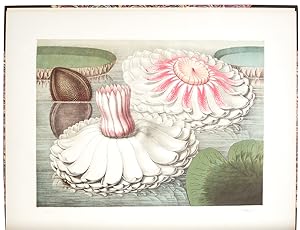
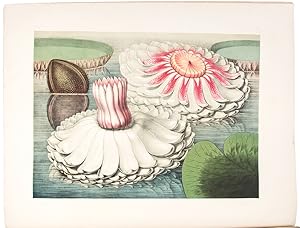
![Image du vendeur pour Buffalo Bill [and the "Frenchman's Bottle Gag," a comic tableau from the wild west show] mis en vente par Donald A. Heald Rare Books (ABAA)](https://pictures.abebooks.com/inventory/md/md765237727.jpg)
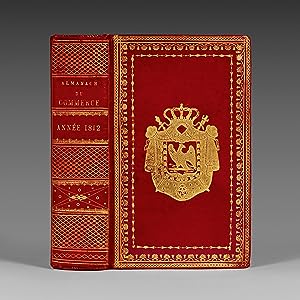
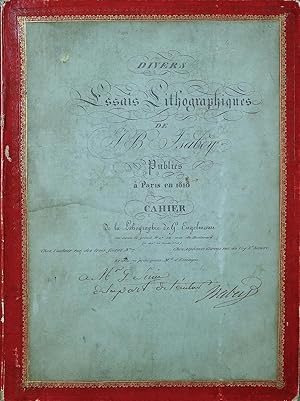
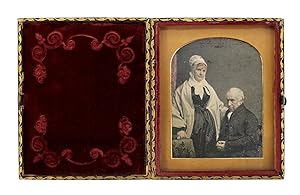
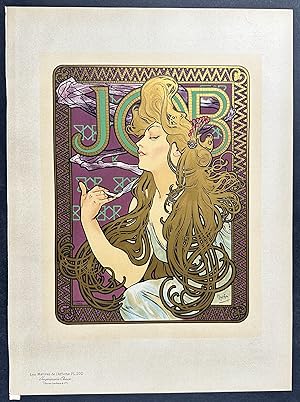

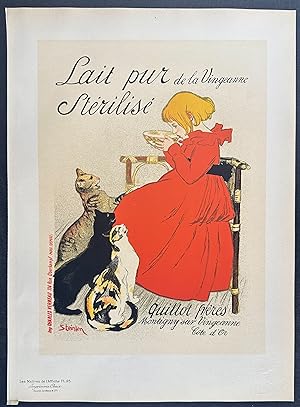
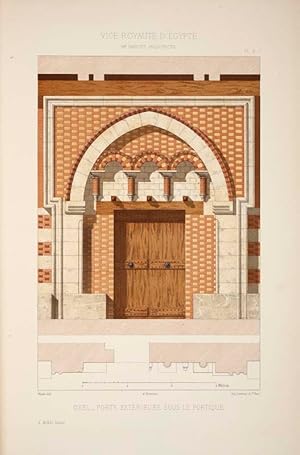
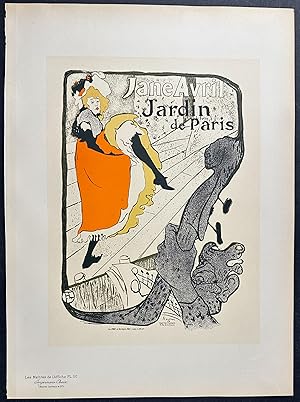
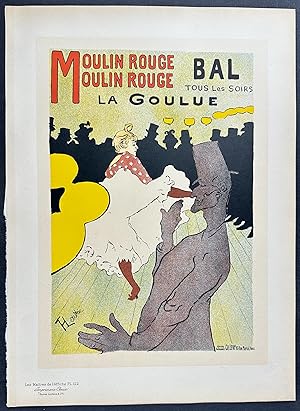
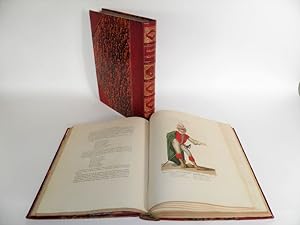
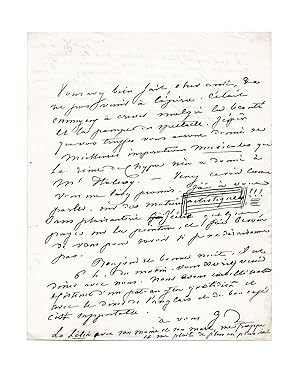
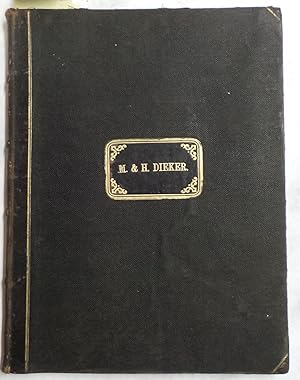
![Image du vendeur pour [SURREAL JAPANESE STAGE PROP DESIGNS]. Tsukurimono shukÅ no tane ("Ideas for fabricated things") mis en vente par Michael Laird Rare Books LLC](https://pictures.abebooks.com/inventory/md/md31669192632.jpg)
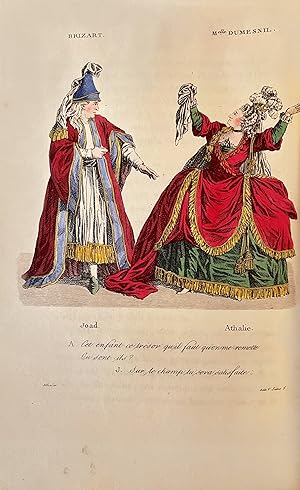
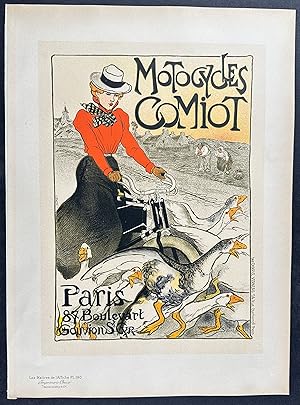
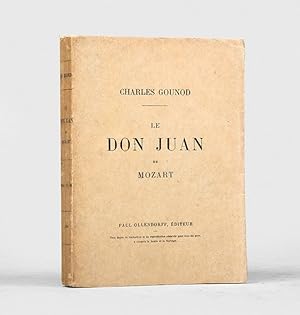
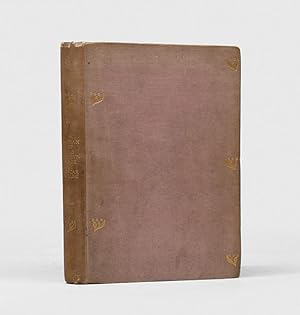
![Image du vendeur pour Theatre Royal Covent Garden [.] Robert's Moving Diorama of the Polar Expedition. Being a series of Views representing the progress of His Majesty's Ships the Hecla and Fury, in their endeavour to discover A North-West Passage mis en vente par Maggs Bros. Ltd ABA, ILAB, PBFA, BA](https://pictures.abebooks.com/inventory/md/md31723542080.jpg)
![Image du vendeur pour [Programme de la Fête de Nuit au Théâtre Royal de l'Opéra-Comique, le Mercredi 14 janvier]. mis en vente par Bonnefoi Livres Anciens](https://pictures.abebooks.com/inventory/md/md21313845608.jpg)

![Image du vendeur pour [Privater Sammelband mit 17 (Werbe-)Broschüren zu Attraktionen der bzw. rund um die Pariser Weltausstellung 1900]. mis en vente par antiquariat peter petrej - Bibliopolium AG](https://pictures.abebooks.com/inventory/md/md30423639672.jpg)
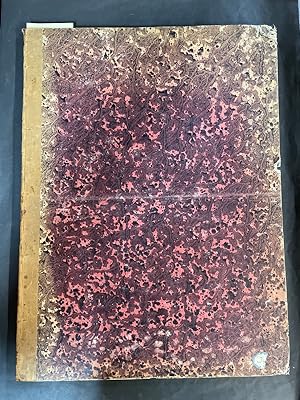
![Image du vendeur pour The Book-Hunter in London : Historical and other Studies of Collectors and Collecting. ; The Book-Hunter in Paris : Studies among the Bookstalls and the Quays. [bookhunter] mis en vente par Joseph Valles - Books](https://pictures.abebooks.com/inventory/md/md2924701707.jpg)
![Image du vendeur pour Accounts of the Estate of the late Miss Henrietta Campbell, Dec[eased] mis en vente par Whitmore Rare Books, Inc. -- ABAA, ILAB](https://pictures.abebooks.com/inventory/md/md31265355320.jpg)
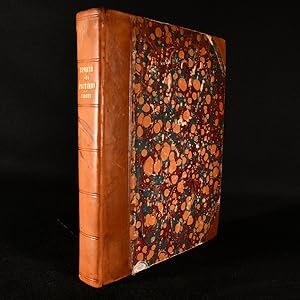
![Image du vendeur pour Collection abrégée des voyages anciens et modernes autour du monde [SUIVI DE ] Voyage en Chine avec des extraits des autres voyageurs les plus célèbres et les plus récents ; contenant des détails exacts sur les moeurs, les usages et les productions les plus remarquables des différens peuples de la terre, enrichie de cartes, figures et des portraits des principaux navigateurs. [suivi de] Voyage en Chine formant le complément du Voyage de Lord Macartney contenant des observations et des descriptions faites pendant le séjour de l'auteur dans le palais impérial de Yuen-Min-Yuen, et en traversant l'empire chinois, de Péking à Canton : Suivi de la relation de l'ambassade envoyée, en 1719, à Péking, par Pierre Premier, empereur de Russie : Traduits de l'anglais, avec des Notes, par J. Castéra, traducteur du Voyage de Lord Macartney en Chine et en Tartarie. mis en vente par Librairie-Galerie Emmanuel Fradois](https://pictures.abebooks.com/inventory/md/md31544297080.jpg)